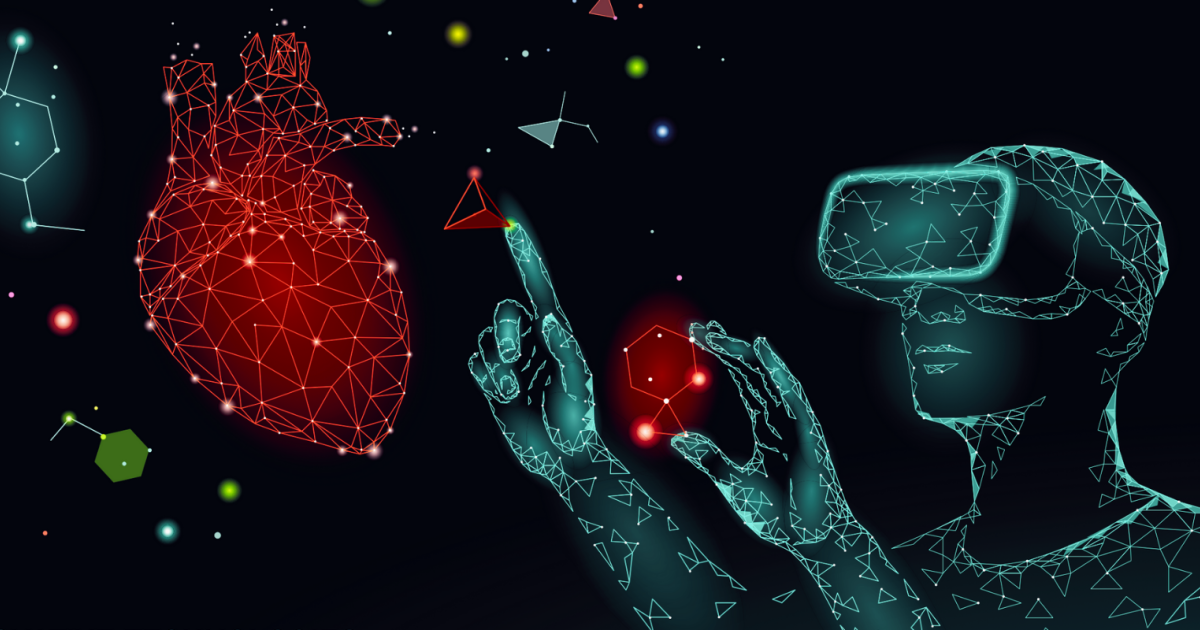In recent years, Augmented Reality (AR) and Virtual Reality (VR) technologies have significantly transformed the landscape of medical education. These technologies offer innovative methods for training healthcare professionals, providing them with immersive and interactive learning experiences that were previously unimaginable.
By integrating AR and VR into medical training programs, educational institutions are enhancing the learning process, increasing engagement, and improving the overall effectiveness of medical education.
What are AR and VR?
- Augmented Reality (AR): AR technology overlays digital information onto the real world. In a medical context, this might mean seeing a 3D model of the human body projected over a real-world object, such as a mannequin or even a patient.
- Virtual Reality (VR): VR immerses the user in a completely digital environment. In medical training, this could involve entering a fully interactive 3D model of the human body where students can practice procedures or explore anatomy in a way that feels real.
Key Benefits of AR and VR in Medical Education
Enhanced Understanding of Complex Concepts
Both AR and VR allow medical students to visualize complex anatomical structures in three dimensions, which is a significant advancement over traditional two-dimensional learning tools like textbooks and diagrams. This 3D visualization helps students grasp complex concepts more quickly and retain this information more effectively.
Safe and Controlled Simulation of Medical Procedures
VR provides a safe environment where students can practice surgeries and other medical procedures without the risk of harming a real patient. These simulations can be programmed with various scenarios, giving students a broad range of experiences. For instance, they can practice responding to surgical emergencies or rare complications in a controlled setting that mimics real-life pressures and urgencies.
Personalized Learning Experiences
AR and VR can adapt to the individual learning pace and style of each student. These technologies can assess a student’s performance in real-time and adjust the difficulty level or provide personalized feedback. This tailored approach helps to ensure that all students reach the required competency level regardless of their starting skill set.
Increased Engagement and Interaction
Learning through AR and VR is often more engaging than traditional learning methods. These technologies can turn learning into a dynamic activity that keeps students motivated and actively involved in their education. The immersive nature of AR and VR makes learning more interesting and enjoyable, which can improve attendance and attention in training programs.
Remote Learning Opportunities
VR, in particular, offers opportunities for remote learning, allowing students to participate in interactive training sessions from anywhere in the world. This is especially beneficial in regions with limited access to medical education resources or advanced training facilities.
Repeatability
With VR simulations, medical procedures can be repeated as many times as needed. This allows students to practice until they achieve mastery, without the resource limitations or logistical challenges that come with training on real patients or using physical resources.
Challenges and Considerations
While the benefits are significant, there are also challenges to the adoption of AR and VR in medical education:
- Cost: Implementing AR and VR technology can be expensive, with costs associated with software development, hardware acquisition, and ongoing maintenance.
- Technology Limitations: The quality of the educational experience depends heavily on the technology’s capabilities, which are still evolving. Issues such as image resolution, user interface design, and the physical discomfort related to long periods of VR use need to be addressed.
- Training for Educators: Instructors must be trained not only in the use of the technology but also in how to integrate these tools effectively into the curriculum.
Conclusion
AR and VR technologies are reshaping the way medical education is delivered. They offer immersive, interactive, and personalized learning experiences that enhance the understanding and retention of complex medical information. As these technologies continue to develop and become more accessible, they are likely to become a standard part of medical training, ultimately leading to better-prepared, skilled healthcare professionals.
